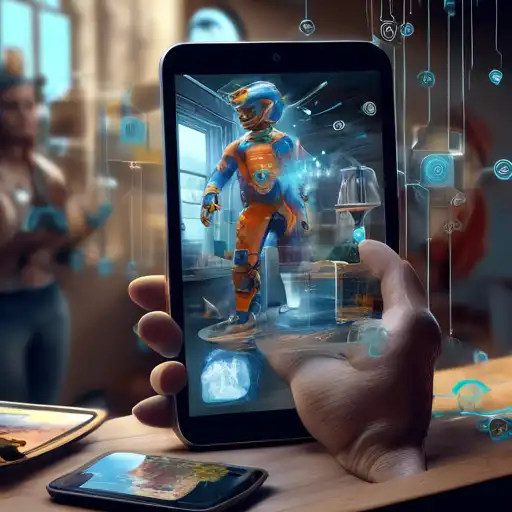Augmented Reality: The Future of Digital and Physical World Integration
Augmented Reality (AR) is rapidly transforming how we interact with the world around us, seamlessly blending digital elements with our physical environment. This innovative technology overlays computer-generated images, sounds, and other sensory enhancements onto the real world, offering a composite view that enriches the user experience. From gaming and entertainment to education and retail, AR is opening up new possibilities for engagement and interaction.
Understanding Augmented Reality
At its core, Augmented Reality enhances our perception of reality by adding digital information to it. Unlike Virtual Reality (VR), which creates a completely artificial environment, AR uses the existing environment and overlays new information on top of it. This technology is accessible through various devices, including smartphones, tablets, and AR glasses, making it widely available to the public.
Applications of Augmented Reality
AR technology has found applications in numerous fields, revolutionizing traditional practices and introducing innovative solutions. Here are some key areas where AR is making an impact:
- Retail: AR allows customers to visualize products in their own space before making a purchase, enhancing the shopping experience.
- Education: Interactive AR applications make learning more engaging by bringing educational content to life.
- Healthcare: AR assists in complex surgeries by providing surgeons with real-time, 3D visualizations of the patient's anatomy.
- Entertainment: From AR games to interactive movie experiences, this technology is creating new forms of entertainment.
The Benefits of Augmented Reality
Augmented Reality offers numerous benefits, including enhanced user engagement, improved learning outcomes, and increased efficiency in various industries. By bridging the gap between digital and physical worlds, AR provides a unique platform for innovation and creativity.
Challenges and Future Directions
Despite its potential, AR technology faces challenges such as privacy concerns, high development costs, and the need for advanced hardware. However, ongoing advancements in AR software and hardware are addressing these issues, paving the way for broader adoption and more sophisticated applications.
As we look to the future, Augmented Reality is set to play a pivotal role in shaping our interaction with technology. With its ability to merge digital and physical realities, AR is not just a tool for entertainment but a transformative technology that will redefine industries and enhance our daily lives.
For more insights into the latest tech trends, explore our Tech Trends section.
